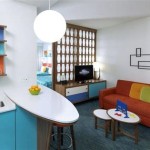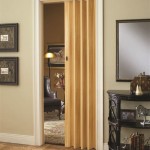Graphic Design for Interiors: Elevating Spaces Beyond the Visual
Graphic design, typically associated with digital interfaces and printed materials, has found its way into the world of interior design. It is no longer just about aesthetics, but about creating a holistic and engaging experience within a space. Graphic design for interiors involves the strategic use of visual elements – typography, color palettes, patterns, and imagery – to influence the mood, functionality, and overall narrative of a room or building. This approach transcends mere decoration, aiming to create spaces that are both visually appealing and conceptually compelling.
Creating a Sense of Place and Identity
One of the core functions of graphic design in interiors is to establish a distinct identity for a space. This is achieved through carefully selecting and implementing graphic elements that communicate the intended atmosphere and purpose. For instance, a restaurant looking to create a vibrant and energetic ambiance might employ bold typography, contrasting colors, and dynamic patterns on its walls and menus. In contrast, a library seeking a calming and reflective atmosphere might opt for muted tones, serif fonts, and minimal imagery. Graphic design becomes a tool to tell a story, shaping the experience visitors have within the space.
Enhancing Functionality and Guidance
Beyond aesthetics, graphic design plays a crucial role in enhancing the functionality of a space. It can guide movement, provide information, and improve accessibility. For example, strategically placed signage with clear typography and contrasting colors can direct visitors effortlessly throughout a complex building. Wayfinding systems utilizing graphic elements can help people navigate unfamiliar spaces with ease. In healthcare facilities, color-coded graphics can help patients identify specific areas, ensuring a smooth and stress-free experience.
Enriching the Narrative and Storytelling
Graphic design empowers interior spaces to communicate a narrative beyond the physical elements. Through the strategic use of imagery, typography, and color, spaces can tell stories about their history, purpose, or values. For example, a museum gallery can utilize custom-designed graphics to showcase historical timelines, provide context for artifacts, and enhance the visitor’s understanding of the exhibited material. Similarly, a restaurant can employ themed murals or illustrations to transport diners to a different time or place, creating a more immersive and memorable experience.
Collaborating with Interior Designers
The successful integration of graphic design into an interior space requires collaboration between graphic designers and interior designers. This collaborative approach ensures that graphic elements are seamlessly woven into the overall design concept, complementing the architectural features and furniture choices. The graphic designer brings expertise in visual communication and storytelling, while the interior designer focuses on creating a cohesive and functional environment. This collaborative approach ensures that the final result is not just aesthetically pleasing but also purposeful and impactful.
From Signage to Murals: The Spectrum of Graphic Design in Interiors
The application of graphic design in interiors extends beyond traditional signage and wayfinding. It encompasses a wide range of elements, including:
- Wall coverings: Incorporating patterns, textures, and imagery to create a visual focal point or break up monotony.
- Murals: Utilizing large-scale artwork to tell stories, create illusions of space, or add a touch of whimsy.
- Window treatments: Designing graphic elements on blinds, curtains, or window films to control light and create visual interest.
- Furniture accents: Adding graphic details to upholstery, cushions, or throw pillows to complement the overall design scheme.
- Lighting fixtures: Integrating graphic elements into lampshades, pendant lights, or sconces to add a unique design touch.
- Digital displays: Using digital screens to showcase information, artwork, or interactive experiences.
Graphic design for interiors is an innovative and versatile approach that can elevate the experience of any space. It goes beyond mere decoration, creating environments that are functional, engaging, and imbued with meaning. By leveraging the power of visual communication, graphic design transforms interiors into spaces that tell stories, shape perceptions, and create lasting impressions.

Graphics In Interior Design A Pictorial Journey Synergy Corporate Interiors

Graphics In Interior Design A Pictorial Journey Synergy Corporate Interiors

These Office Interiors Are Inspired By Well Known Fonts Archdaily

Graphic Patterns Hot Interior Design Trend The American Genius

31 Graphic Design Trends To Try At Home Office Interior Interiors

Interior Design Logo Template Graphic By Pretty Decadent Creative Fabrica

Give Your Interior Design Business A Makeover With Beautiful Brochures Flyers And Note Cards Stocklayouts

Graphic Design 040915 10 Office Wall Graphics Stair Art

Interior Design Social Media Pack Graphic By Look Studio Creative Fabrica

Interior Design Presentations The Secret To Winning More Clients








